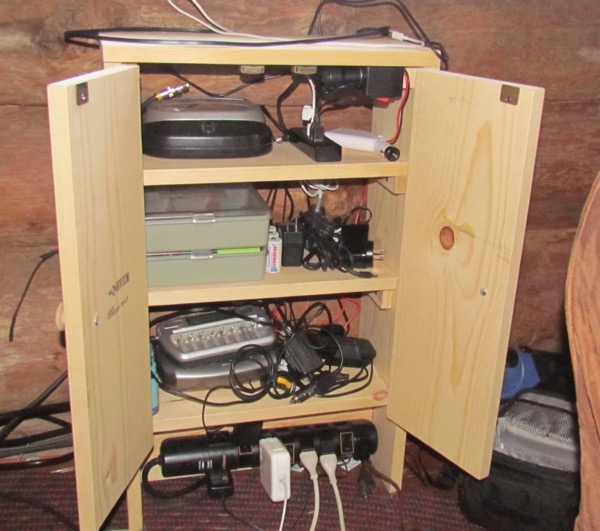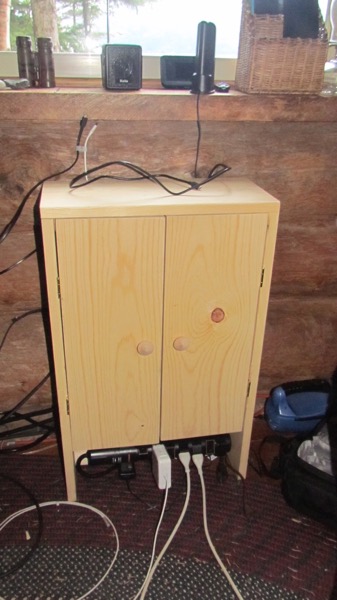The irony of my timing is not lost on me. I recently completed a long-delayed project: I built an electronics cabinet for the homestead, in the middle of a low-power period (see Analog Days, Oil Lamp Nights).
I wanted to finish it as soon as we’d completed installation on our new hot water heater (see An Alarming Debut) so that we could decorate for Christmas.
Michelle has wanted the cabinet for a long time. She’s always dreamed of something—anything—to tidy up the snarled pile of electronics, their chargers, and their cords that sits under the window by the 12 volt outlets.
But there’s more to it than neatness. I envisioned a true home power center, and that’s what I built, to the best of my ability.
The 12 volt outlets I’d installed a few years ago have not held up well (see New 12 Volt Outlets for the Cabin). Some key components of our electronics system have faltered or failed over time, mostly, apparently, because they were powered by inferior outlets. By the time I decommissioned it, only 2 of the 4 outlets in the unit seemed trustworthy. I installed new, heavy duty outlets (paid link) in the cabinet: two sets of 3 outlets, attached to the underside of the shelves, recessed or turned so that they can accommodate the bulkiest 12 volt plugs.
In addition, I installed an AC power strip on the bottom, a newer design that features rotating plugs (paid link)—very useful for fitting “wall warts” in a small space.
Now, theoretically, we can store almost all of our recharging gear inside the cabinet, with a neat little counter space on top to hold charging phones and the like without getting out of hand.

Once someone else rearranges all the crap I crammed in there, it ought to be great! (Photo: Mark A. Zeiger).
Like so many of my construction projects on the homestead, I built it free-form, without plans. It came together pretty well. No one would mistake it for a quality piece of furniture, but it seems like it’ll do the job. It’ll certainly help keep wires and components out from under foot! Now, we just need to recharge the batteries, so we can start using it!

